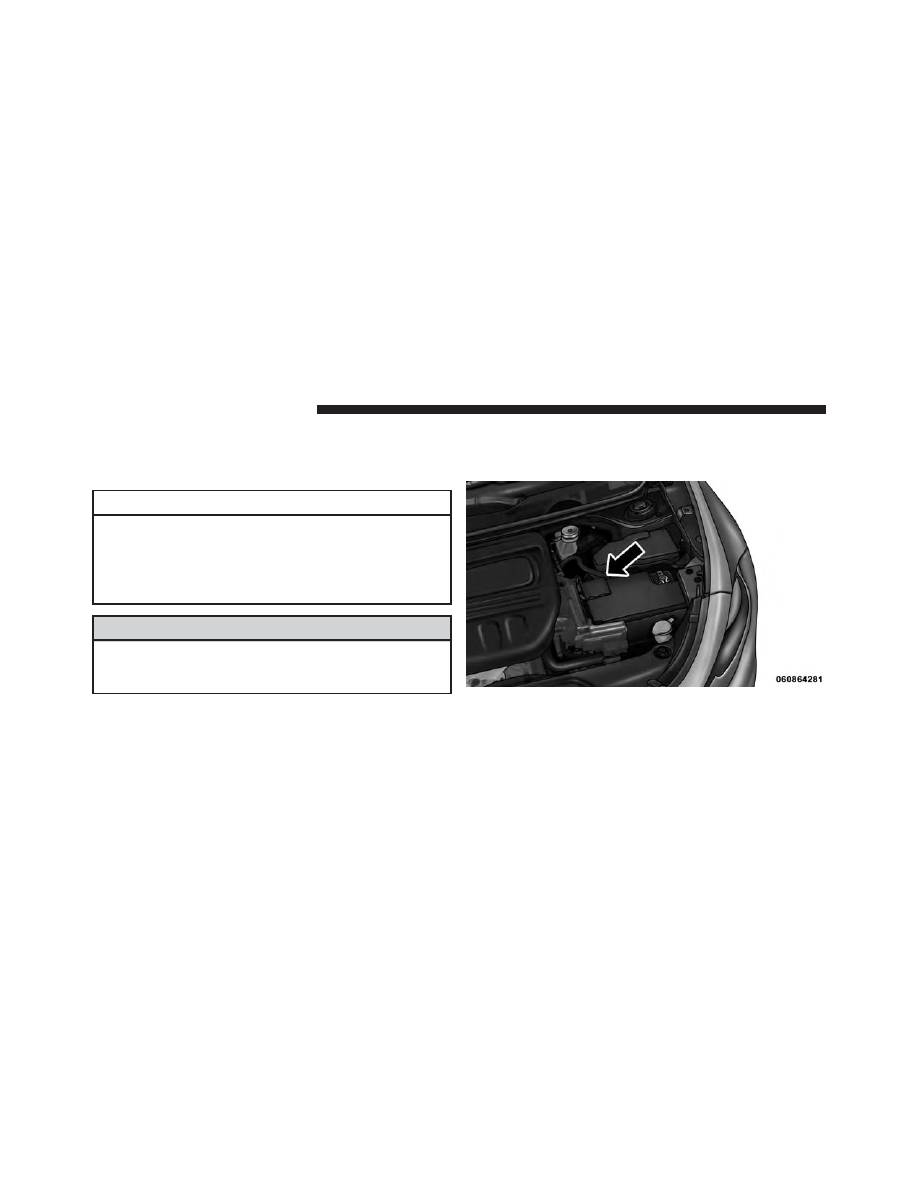Dodge Dart (2016 year). Instruction - part 35

NOTE:
When using a portable battery booster pack
follow the manufacturer’s operating instructions and
precautions.
CAUTION!
Do not use a portable battery booster pack or any
other booster source with a system voltage greater
than 12 Volts or damage to the battery, starter motor,
alternator or electrical system may occur.
WARNING!
Do not attempt jump-starting if the battery is frozen.
It could rupture or explode and cause personal injury.
Preparations For Jump-Start
The battery in your vehicle is located in the front of the
engine compartment, behind the left headlight assembly.
NOTE:
The positive battery post is covered with a
protective cap. Lift up on the cap to gain access to the
positive battery post.
Positive Battery Post
556
WHAT TO DO IN EMERGENCIES